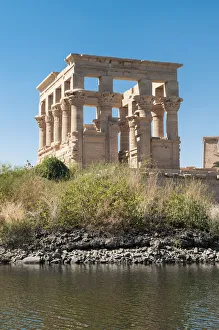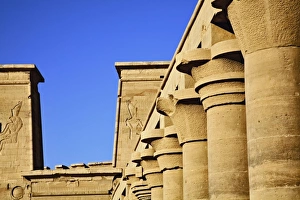Temple Of Philae Collection (page 2)
The Temple of Philae, nestled on an island in the serene waters of Lake Nasser along the majestic Nile River
All Professionally Made to Order for Quick Shipping
The Temple of Philae, nestled on an island in the serene waters of Lake Nasser along the majestic Nile River, is a captivating testament to Egypt's rich history and architectural prowess. This enchanting sanctuary, located in Aswan, Africa, beckons tourists from all corners of the globe to embark on a mesmerizing journey through time. As you step foot onto this sacred island, you are greeted by the awe-inspiring Grand Portico of the Temple of Philae. Its grandeur is beautifully captured in a tinted lithograph from 1842-1849, showcasing intricate details that have stood the test of time. Venturing further into this ancient marvel, you find yourself walking amidst its hallowed halls. The temple's walls whisper tales of centuries past as tourists tread softly upon its storied grounds. A tourist walks through with wide-eyed wonderment and reverence for this remarkable piece of history. Guardians stand watchful at every corner, their presence adding an air of mystique to this already mystical place. Their unwavering dedication ensures that the sanctity and beauty of Philae remain intact for generations to come. The Temple of Isis stands proudly here on Philae Island – a true gem amidst Egypt's cultural treasures and has been immortalized in various engravings over time; one such engraving from c. 1809-1812 showcases its magnificent portico adorned with vibrant colors that once breathed life into these ancient stones. From Cairo to Khartoum, travelers have marveled at the splendorous sight that awaits them on this island oasis. And even today, visitors continue to be captivated by Ernst Weidenbach's lithograph from 1861 which perfectly captures Philae Island's ethereal charm. Intriguing and timeless, the Temple of Philae stands as a testament to human ingenuity and devotion throughout history.


















